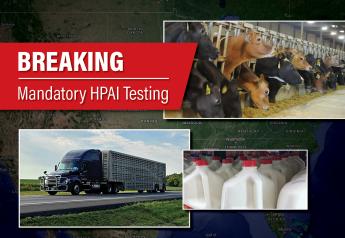Pros and Cons of Multi-species Grazing

By David Burton, University of Missouri extension
It is becoming more common for producers to use multi-species grazing — mixing sheep or goats together with cattle — to improve the use of forages and cut down on the expenses of mowing and spraying weeds in pasture.
In some cases, even goats and horses are included in the mix according to Jodie Pennington, small ruminant educator with Lincoln University Extension.
"Goats now are often used with multi-species grazing but it is important to remember that even though multi-species grazing can increase the use of the forages by over 20% in heavily weeded or browse-covered pasture, not all of the increased use is profitable," said Pennington.
PARASITE CONCERNS
Depending on the situation, small ruminants may require a more extensive program to control internal parasites than cattle which can add to labor demands.
However, there are times that parasite-control program may benefit from multi-species grazing.
"Because gastrointestinal parasites from goats or sheep cannot survive in the stomach of cattle and vice versa, multi-species grazing may decrease internal parasite loads. The decreased level of parasites should result in fewer treatments for worms which could slow resistance of parasites to conventional dewormers, an increasing problem with small ruminants," said Pennington.
In a field infected with a high load of larvae from sheep and goat parasites, cattle should be grazed first to pick up the larvae of parasites, and then goats or sheep could graze with less danger of parasite infestation. In other situations, producers may prefer to have small ruminants graze before cattle as most of the larvae of internal parasites are located on plants within four inches of the ground.
PREDATOR CONTROL
Some type of predator control program is essential with sheep and goats since they are more susceptible to feral or local dogs and coyotes than cattle. Cattle may serve as a deterrent to the roaming canines but extra precautions are usually needed according to Pennington.
"Livestock guardian animals are most commonly used to protect the small ruminants from predators. But, donkeys, mules, mustangs, and llamas are also used," said Pennington.
If a guardian animal does not protect the herd, it should be replaced.
Additional fencing (to keep goats in and dogs or coyotes out) is usually the most expensive change when grazing small ruminants with cattle. Reinforcing existing fencing with electric fencing is usually the most economical method.
OTHER ISSUES
As with all livestock, there may be personality conflicts with mixed species of animals. If this occurs, Pennington says the least desirable animals involved in the conflict are best culled from the herd.
Another problem with grazing of multiple species is the feeding of minerals.
Usually goats and cattle can tolerate the same mineral unless there appears to be a health concern. However, sheep do not tolerate as high a level of copper as do goats and cattle if the animals are being co-mingled.
BOTTOM LINE
"Producers with cattle can obtain greater pounds of meat per acre and can reduce weeds and brush in a pasture when adding small ruminants for multi-species grazing. These benefits need to be compared to the additional labor and fencing requirements for the small ruminants as well as the costs of predator control for sheep or goats," said Pennington.







